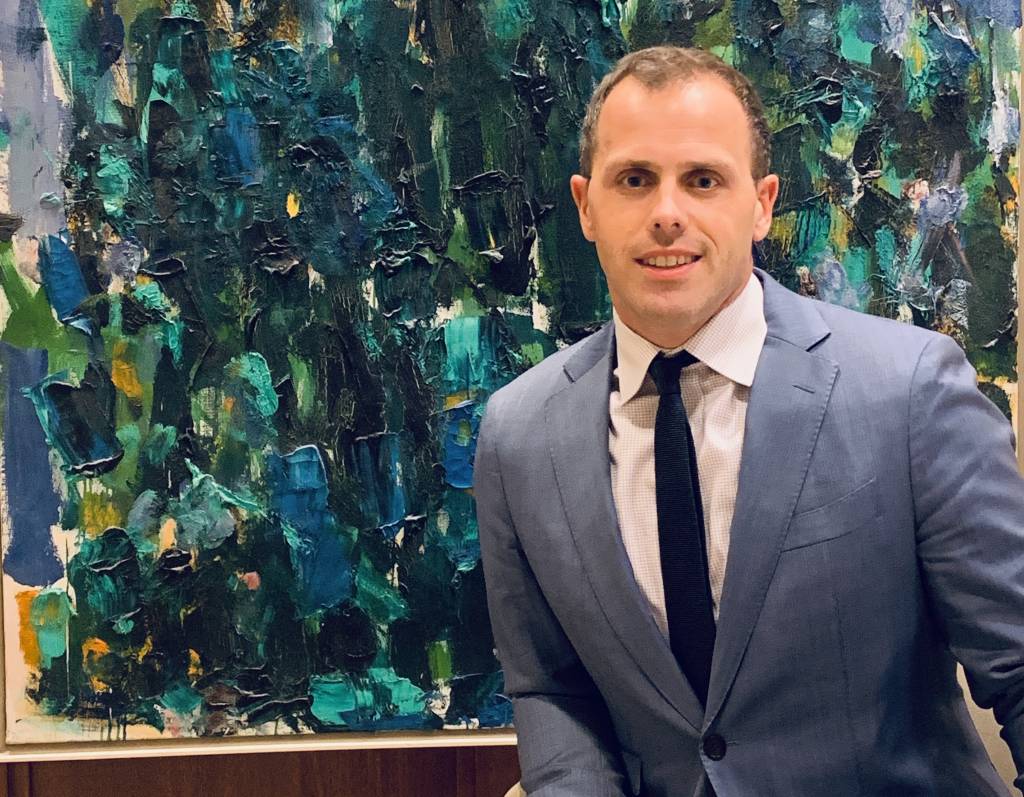SE: I want to focus now on the business. Are there any new or emerging trends that you’re seeing in the art market that might have a particular impact on our collectors or artists?
EB: Earlier, we talked about this being “the age of identity.” That idea of artist biographies or identities carrying weight is having an impact – everything from galleries diversifying the artists they’re presenting, to how the auction houses are putting sales together, to how the curatorial departments in museums around the world are collecting and how they’re re-contextualizing in their departments. It’s a big driver – it’s probably the most, in my opinion, important megatrend going on right now.
A couple of other trends we’re seeing: the art market has matured into a full industry. We’ve seen galleries either scale up, go global, and act like real businesses, or get squeezed. This focus has forced artists to decide, do I try and market to these mega galleries? Do I do something on my own? Will these galleries be around? If you look historically, the artists that were featured in galleries like the Whitney Biennale in the ‘70s—those whose galleries lasted more than 10-20 years —are still around and have markets. It has a huge impact on the long-term commercial viability of the artist.
Another trend is that we’re in the first generation, I think, where art has become a capital asset in addition to being a source of pleasure. We have private banks that are lending against art, we have art funds, and collectors have one eye on the financial ability of this $50 billion market. Auction houses are doing sophisticated financial transactions. A lot of works have interest-rate hedges and currency hedges. The art market isn’t as simple as it used to be, so we’re also in the age of the financialization of this market. All the way back to the Medici’s, art and money have been intertwined with one another, but art has never been viewed as a capital asset as it is now.
Another trend we see is that as art is becoming more political, artists are challenging the museum and the institution in ways that we have not seen in the past. Everyone’s wondering where activism will take us. It can take us down a very dark road or a good check—we don’t know, it’s too early to tell.
And finally, Instagram. It has completely changed the art world. The art world used to be a very discreet place where it was difficult to have a voice. Now, dealers are selling via Instagram, collectors are posting everything they own, and museums and auction houses are announcing new acquisitions via Instagram. Art has become more alive with fashion, which is having a huge impact on what people are collecting. Technology has not largely disrupted the art world, but Instagram is having a real impact on it.

“State of the Art: Discovering American Art Now” opened at Crystal Bridges in 2014. “State of the Art 2020,” opening February 22, 2020, will continue an exploration of contemporary American art.
SE: Fascinating. Let’s stay with technology and tell us what’s happening in the online market. Do you see it continuing to grow?
EB: When we say the online market, digital sales channels are still around in terms of the actual business that gets done in the art world, however, by its nature, the art world is still a very tactile industry, and people still need to view art in person. Technology has glided into the space. We’re seeing virtual reality viewing spaces for art fairs. Soon, we’re going to see every auction catalog in a VR viewing room, so people can see art up close from wherever they are in the world. The technology of viewing art globally is becoming more interesting. With that said, most art in the value of sales happens the same way it did in the nineteenth century. Digital has not transformed the art market yet – maybe it will, but it’s not there yet.
SE: Let’s talk about the art lending business. Do you see an increase in art collectors borrowing against their collection?
EB: Very much so. Our art loan book has doubled in the last few years. It’s a very large business. And people say, why in the world would all these wealthy collectors need to borrow money against their art? Collectors don’t need money – they’re doing an arbitrage. They’re putting a lot of capital into an asset (their art). Folks that drive capital into their art can unlock that capital with a line of credit against their art, and then plow that capital into their private equity fund, private business, a real estate empire, etc., or they can use it to buy more art when they’re in Basel. Using art as a capital asset has become a balance sheet arbitrage play that most of the major collectors (ArtNews Top 200) are doing.
SE: Let’s talk about your consignment services. Can you tell me about that?
EB: There used to be an adage in the art world that collectors aren’t sellers, but now, there’s a new breed of collector that buys and sells on the way out. We see a lot of collectors trading out of certain segments and taking things to auction or selling privately. We do quite a few consignment deals for clients where we negotiate on their behalf on the sales side. It’s a fairly new business, but one that’s growing for us, and I think a lot of collectors underestimate the leverage they have over auction houses or private dealers when it comes time to sell their art.
Cover image: Evan Beard with Joan Mitchell, Untitled, 1977.




